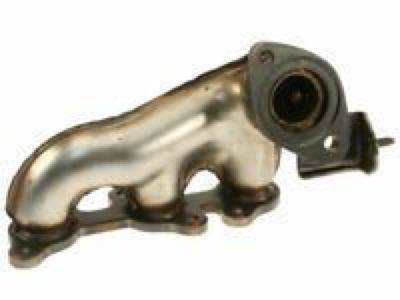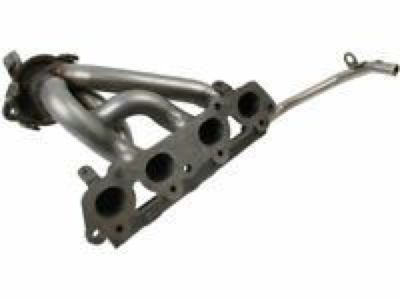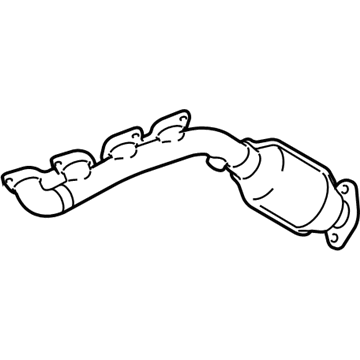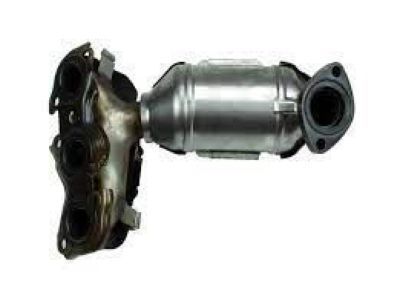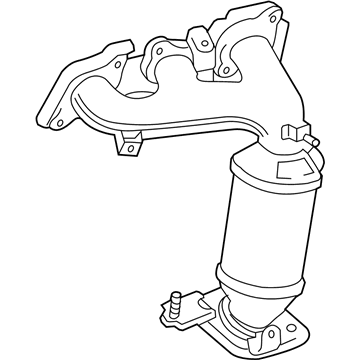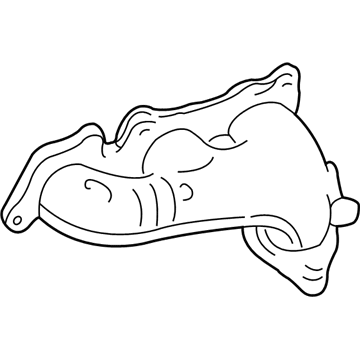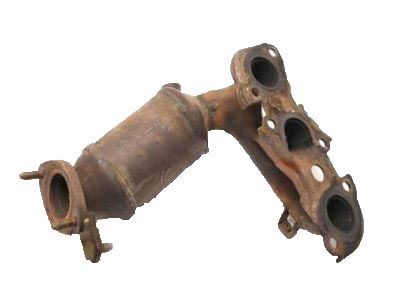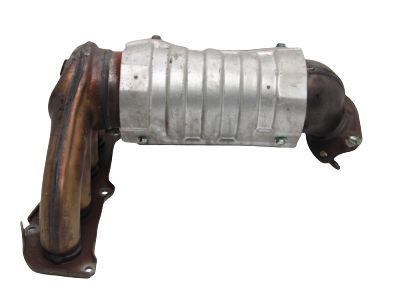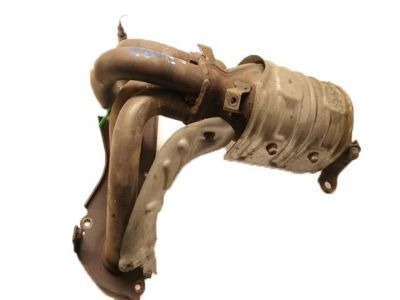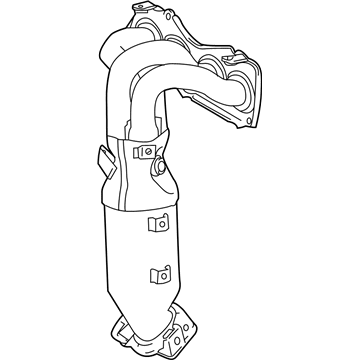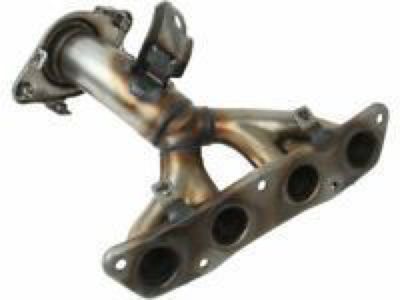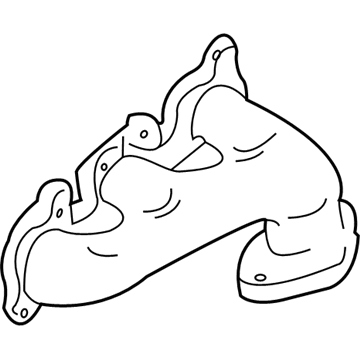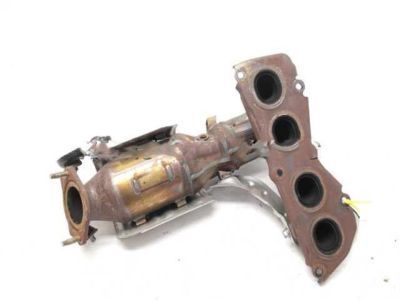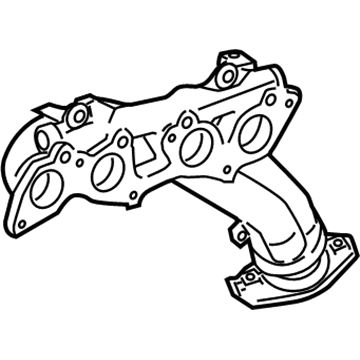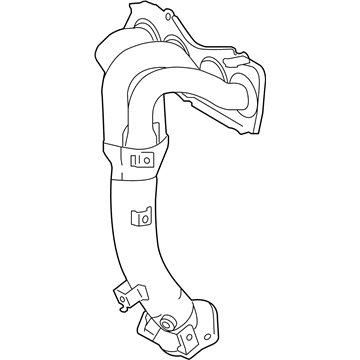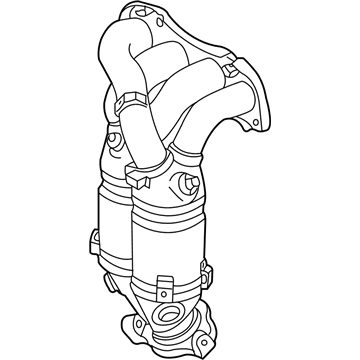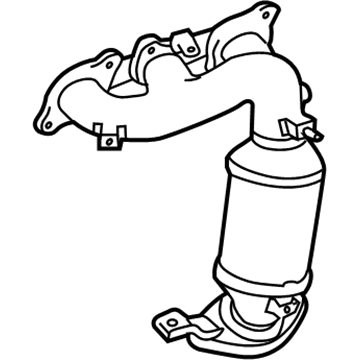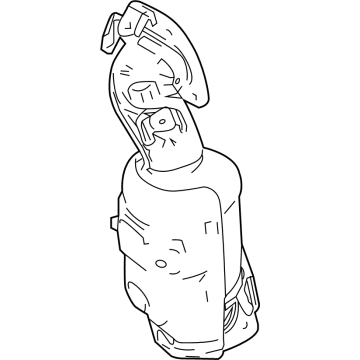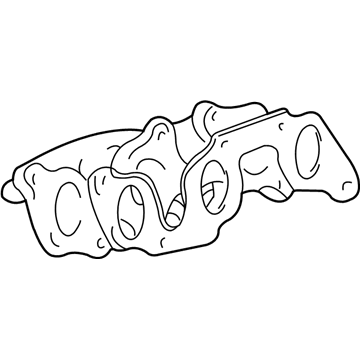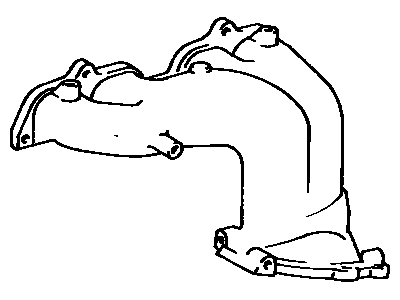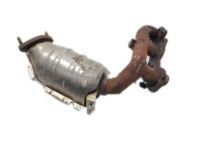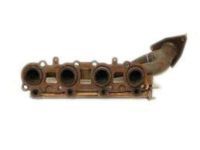×
ToyotaParts- Hello
- Login or Register
- Quick Links
- Live Chat
- Track Order
- Parts Availability
- RMA
- Help Center
- Contact Us
- Shop for
- Toyota Parts
- Scion Parts
My Garage
My Account
Cart
OEM Toyota Exhaust Manifold
Engine Exhaust Manifold- Select Vehicle by Model
- Select Vehicle by VIN
Select Vehicle by Model
orMake
Model
Year
Select Vehicle by VIN
For the most accurate results, select vehicle by your VIN (Vehicle Identification Number).
263 Exhaust Manifolds found

Toyota Manifold Sub-Assembly, Exhaust, Driver Side
Part Number: 17105-50170$564.88 MSRP: $827.84You Save: $262.96 (32%)Ships in 1-2 Business DaysProduct Specifications- Other Name: Manifold Sub-Assembly, Exhaust; Exhaust Manifold
- Position: Driver Side

Toyota Manifold Sub-Assembly, Exhaust, Passenger Side
Part Number: 17140-20080$630.25 MSRP: $923.65You Save: $293.40 (32%)Ships in 1-3 Business DaysProduct Specifications- Other Name: Manifold Assembly, Exhaust; Exhaust Manifold
- Manufacturer Note: TYPE B OR TYPE C:REFER TO ILLUSTRATION
- Position: Passenger Side
- Replaces: 17140-20070, 17140-20100

Toyota Exhaust Manifold, Driver Side
Part Number: 17105-20010$246.50 MSRP: $351.95You Save: $105.45 (30%)Ships in 1-3 Business DaysProduct Specifications- Other Name: Manifold Sub-Assembly, Exhaust; Exhaust Manifold, Left; Manifold; Manifold Sub-Assembly, Exhaust, Driver Side
- Position: Driver Side

Toyota Converter Sub-Assembly, Exhaust Manifold, Driver Side
Part Number: 25052-20170$619.47 MSRP: $772.08You Save: $152.61 (20%)Ships in 1-3 Business DaysProduct Specifications- Other Name: Converter Sub-Assembly; Exhaust Manifold
- Position: Driver Side
- Replaces: 25052-20160

Toyota Exhaust Manifold
Part Number: 25051-28310$748.63 MSRP: $933.05You Save: $184.42 (20%)Ships in 1-2 Business DaysProduct Specifications- Other Name: Converter Sub-Assembly; Catalytic Converter with Integrated Exhaust Manifold; Manifold Converter; Converter Sub-Assembly, Exhaust Manifold
 Product Specifications
Product Specifications- Other Name: Converter Sub-Assembly; Catalytic Converter with Integrated Exhaust Manifold; Manifold Converter; Converter Sub-Assembly, Exhaust Manifold
- Manufacturer Note: CALIFORNIA SPEC,*212
- Replaces: 25051-36040

Toyota Exhaust Manifold, Driver Side
Part Number: 25052-20110$360.12 MSRP: $448.83You Save: $88.71 (20%)Ships in 1-3 Business DaysProduct Specifications- Other Name: Converter Sub-Assembly; Catalytic Converter with Integrated Exhaust Manifold, Left; Manifold Converter; Converter Sub-Assembly, Exhaust Manifold
- Manufacturer Note: MARK 20110
- Position: Driver Side
- Replaces: 25052-20100
 Product Specifications
Product Specifications- Other Name: Converter Sub-Assembly; Catalytic Converter with Integrated Exhaust Manifold; Manifold Converter; Converter Sub-Assembly, Exhaust Manifold
- Manufacturer Note: *212
- Replaces: 25051-36020
Toyota Exhaust Manifold
Part Number: 17141-75150$300.09 MSRP: $428.47You Save: $128.38 (30%)Ships in 1-3 Business DaysProduct Specifications- Other Name: Manifold, Exhaust
Toyota Exhaust Manifold
Part Number: 17104-22010$232.51 MSRP: $331.97You Save: $99.46 (30%)Ships in 1-3 Business DaysProduct Specifications- Other Name: Manifold Sub-Assembly, Exhaust; Manifold, Exhaust
- Manufacturer Note: (J)
- Replaces: 17104-22020
Toyota Exhaust Manifold
Part Number: 17141-0V180$302.54 MSRP: $431.96You Save: $129.42 (30%)Ships in 1-3 Business DaysProduct Specifications- Other Name: Manifold, Exhaust
Toyota Exhaust Manifold, Driver Side
Part Number: 17142-20050$159.95 MSRP: $226.44You Save: $66.49 (30%)Ships in 1-3 Business DaysProduct Specifications- Other Name: Manifold, Exhaust, Left; Exhaust Manifold, Left; Manifold Sub-Assembly, Exhaust, Driver Side
- Position: Driver Side
Toyota Exhaust Manifold, Driver Side
Part Number: 25052-20240$720.15 MSRP: $897.55You Save: $177.40 (20%)Ships in 1-3 Business DaysProduct Specifications- Other Name: Converter Sub-Assembly; Catalytic Converter with Integrated Exhaust Manifold, Left; Converter Sub-Assembly, Exhaust Manifold
- Position: Driver Side
Toyota Exhaust Manifold
Part Number: 25051-28090$1019.45 MSRP: $1270.58You Save: $251.13 (20%)Ships in 1-2 Business DaysProduct Specifications- Other Name: Converter Sub-Assembly; Catalytic Converter with Integrated Exhaust Manifold; Manifold Converter; Converter Sub-Assembly, Exhaust Manifold
Toyota Converter Sub-Assembly, Exhaust Manifold, Driver Side
Part Number: 25052-20220$646.83 MSRP: $806.17You Save: $159.34 (20%)Ships in 1-2 Business DaysProduct Specifications- Other Name: Converter Sub-Assembly; Exhaust Manifold
- Manufacturer Note: *114=TOYOTA/L20220/Y
- Position: Driver Side
Toyota Exhaust Manifold
Part Number: 25051-28410$639.90 MSRP: $797.53You Save: $157.63 (20%)Ships in 1-3 Business DaysProduct Specifications- Other Name: Converter Sub-Assembly; Catalytic Converter with Integrated Exhaust Manifold; Manifold Converter; Converter Sub-Assembly, Exhaust Manifold
Toyota Exhaust Manifold
Part Number: 25051-28290$845.90 MSRP: $1054.28You Save: $208.38 (20%)Ships in 1-2 Business DaysProduct Specifications- Other Name: Converter Sub-Assembly; Catalytic Converter with Integrated Exhaust Manifold; Manifold Converter; Converter Sub-Assembly, Exhaust Manifold
Toyota Exhaust Manifold, Driver Side
Part Number: 17150-0P350$695.63 MSRP: $1019.45You Save: $323.82 (32%)Product Specifications- Other Name: Manifold Assembly, Exhaust; Catalytic Converter with Integrated Exhaust Manifold, Left; Manifold Assembly, Exhaust, Driver Side
- Manufacturer Note: *114=TOYOTA/L0P350/Y
- Position: Driver Side
- Product Specifications
- Other Name: Manifold Sub-Assembly, Exhaust; Exhaust Manifold, Right; Manifold; Manifold Sub-Assembly, Exhaust, Passenger Side
- Position: Passenger Side
- Product Specifications
- Other Name: Manifold, Exhaust, R; Manifold; Manifold, Exhaust
- Position: Passenger Side
| Page 1 of 14 |Next >
1-20 of 263 Results
Toyota Exhaust Manifold
Choose genuine Exhaust Manifold that pass strict quality control tests. You can trust the top quality and lasting durability. Shopping for OEM Exhaust Manifold for your Toyota ? Our website is your one-stop destination. We stock an extensive selection of genuine Toyota parts. The price is affordable so you can save more. It only takes minutes to browse and find the exact fit. Easily add to cart and check out fast. Our hassle-free return policy will keep you stress-free. We process orders quickly for swift delivery. Your parts will arrive faster, so you can get back on the road sooner.
Toyota Exhaust Manifold Parts and Q&A
- Q: How to install the exhaust manifold on Toyota Highlander?A:The first step in installing the 2GR-FE engine exhaust manifold is to install the Bank 1 Sensor 1 air fuel ratio sensor before proceeding with other components. Begin by mounting the exhaust manifold sub-assembly RH with its new gasket and torque its 6 nuts to 21 Nm (214 kgf-cm, 15 ft-lbf) following order direction. After this, connect the air fuel ratio sensor connector while installing the clamp. Start by tightening the bolt to 34 Nm (347 kgf-cm, 25 ft-lbf) and the following nut to 35 Nm (357 kgf-cm, 26 ft-lbf) on the manifold stay using the provided hardware. Use a new gasket during installation of the exhaust manifold sub-assembly LH and apply torque to the 6 nuts at 21 Nm (214 kgf-cm, 15 ft-lbf). Transport the No. 2 manifold stay into position while securing its bolt and nut to reach 34 Nm of torque (347 kgf-cm or 25 ft-lbf). Follow the sequence of assembling front exhaust pipe then front No. 3 exhaust pipe sub-assembly and center exhaust pipe assembly and finishing with tail exhaust pipe installation. Crank the propeller connected to the center bearing shaft assembly for 4WD operations only before applying full torque to the connection. Screw in the three bolts of the No. 2 exhaust manifold heat insulator until they reach 8.5 Nm (87 kgf-cm, 75 in-lbf). Screw in the Bank 2 Sensor 1 air fuel ratio sensor along with the No. 2 oil level dipstick guide and radiator reserve tank assembly while securing them with two bolts and torqueing them to 5.4 Nm (55 kgf-cm, 48 in-lbf). Afterwards, attach the hose. Wrap up the No. 1 radiator hose before you add engine coolant for an inspection that checks for both leaks in exhaust gas and coolant. Repair any detected issues at this time. The maintenance of transfer oil for 4WD completes while technicians install the under covers for the No. 2 engine and No. 1 engine before installing the engine under cover assembly. Finish the procedure by taking off the V-bank cover sub-assembly followed by front wheel RH installation.
- Q: How to service and repair the exhaust manifold on Toyota Tundra?A:Service and repair of the 1GR-FE exhaust manifold starts with disconnecting the negative battery cable and requiring several systems to perform an initialization after reconnecting. Start by removing the air switching valve assembly before moving on to the front No.2 exhaust pipe assembly (Regular Cab Standard Deck) followed by other versions of the model except standard deck regular cab. Move forward to take off the front exhaust pipe assembly. Right-hand exhaust manifold removal requires you to separate each of its six nuts, exhaust manifold along with its accompanying gasket. To detach the No. 2 exhaust manifold heat insulator you need to unscrew its three bolts and separate the heat insulator component. The removal sequence ends with disassembling the exhaust manifold on the left-hand side by disconnecting 6 nuts followed by exhausting its components.
Related Toyota Parts
Browse Toyota Exhaust Manifold by Models
Tacoma 4Runner Camry Tundra Corolla RAV4 Highlander Prius Sienna Land Cruiser Pickup FJ Cruiser 86 Sequoia T100 Avalon Celica Supra Yaris MR2 Matrix Solara Venza GR86 Echo C-HR Cressida Grand Highlander Paseo Previa Prius C Prius Prime Corolla Cross Corolla iM Crown GR Corolla MR2 Spyder Prius V Starlet Tercel Van Yaris iA Prius Plug-In Prius AWD-e RAV4 Prime
